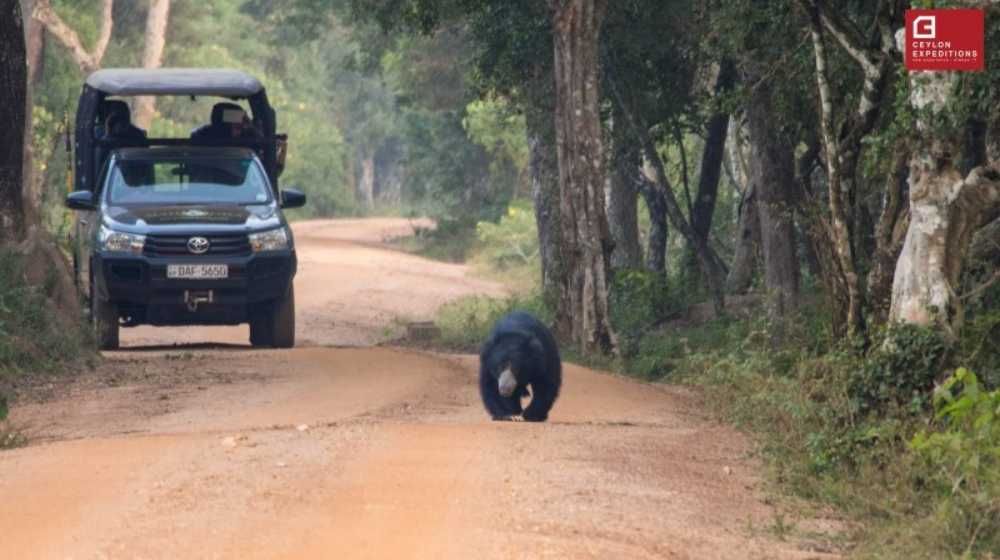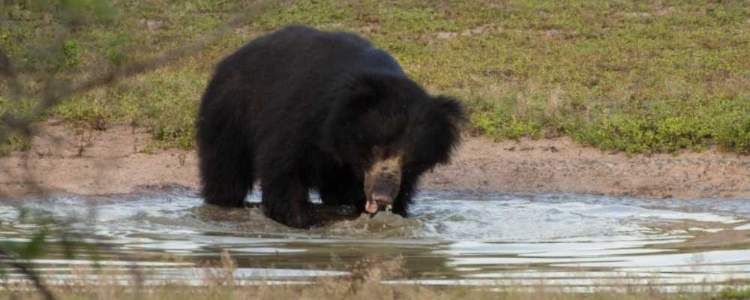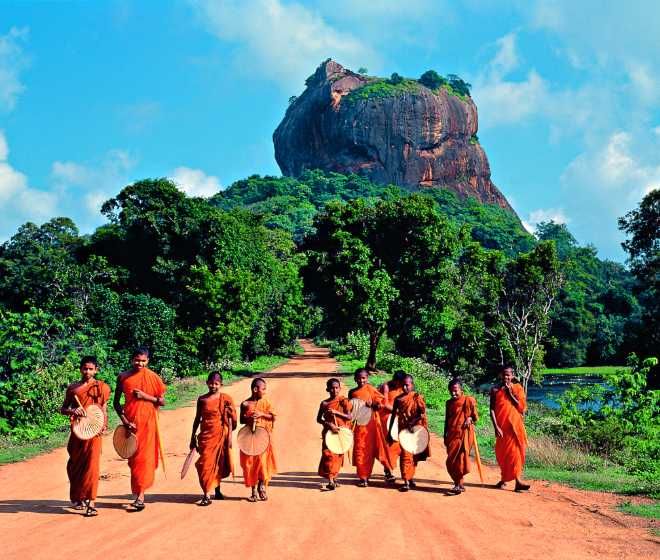
Sri Lankan Sloth Bear
Sri Lankan Sloth Bear (Melursus Ursinus Inornatus) is a sub species of Sloth Bear found mainly in dry zone forest of Sri Lanka. Sloth Bear is a termite eating (Myrnmecophagous) mammal of family Ursidae. The Sloth Bear’s habitat is found in the Indian subcontinent. Sri Lankan bear is about 2/3 of the size of the Sloth Bears found in India.
The Sloth Bear is distinctly shaped with its black shaggy coat. These bears can be distinguished from the Asian Black Bear by their lankier builds, longer, shaggier coats, pale muzzles and white claws. Adult male Sloth Bears weigh up to 130kg on average, whereas females weigh around 110kg. They are 60-90 CM high at the shoulders. Females are smaller than males. In Sri Lanka, this species is restricted to the lowland dry zone forests, which provide cover and shade found mainly in protected areas. These areas contain scrub as well as tall forests and relatively moist conditions. They yield more fruit and provide more den sites for the bears. As a termite-eating mammal, the Sloth Bear has a specially adapted lower lip and palate for gathering their food. Termites are sucked tip through the muzzle.

The sensitive and flexible nose helps to fashion its lips into a tube like form, so the lips function rather like a vacuum-cleaner nozzle to facilitate sucking termites. Sloth Bears may supplement their diet with fruits, honey boss and plant matter. Adult Sloth Bears may travel in pairs, with the males being gentle with cubs. They am capable of galloping faster than running humans. Both adult Sloth Bears and cubs are excellent climbers. To mark their territories, sloth bears will scrape trees with their forepaws, and rub against them with their flanks. They have a great vocal range. The breeding season of the Sri Lankan Sloth Bear is all year-round. Sows gestate for 210 days, and typically give birth in caves or in shelters under boulders. Litters usually consist of one or two cubs, or more rarely, three. Cubs am born blind, and open their eyes after four weeks. They will start walking a month after birth, become independent at 24 36 months, and become sexually mature at the age of three years. Intervals between litters can be two to three years. In Sri Lanka Sloth Bear inhabit the dry zone lowlands with monsoon forest where human activities are relatively low.
The Sloth Bear attracts tourists to Sri Lankan National Parks such as Yala, Wilpattu, Kumana, and Wasgomuwa. The Sloth Bear attracts tourists to the wild with rare sighting. Loss of forest cover and fragmentation by 11w creation of agricultural land and human settlem6nt are major threats to the Sloth Bear. The Sloth Bear is Strictly Protected under the Fauna and Flora Protection Ordinance of Sri Lanka. The National Conservation Status of this species is regarded as “Endangered” (National Rod List 2012). The Sloth Bear is listed as Vulnerable by the IUCN.



